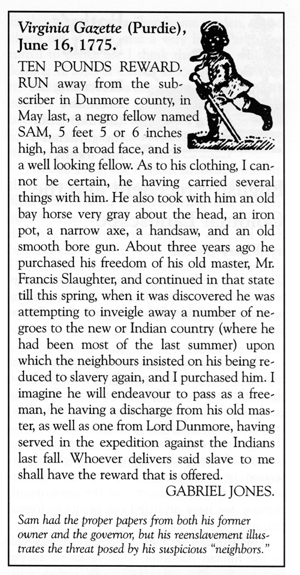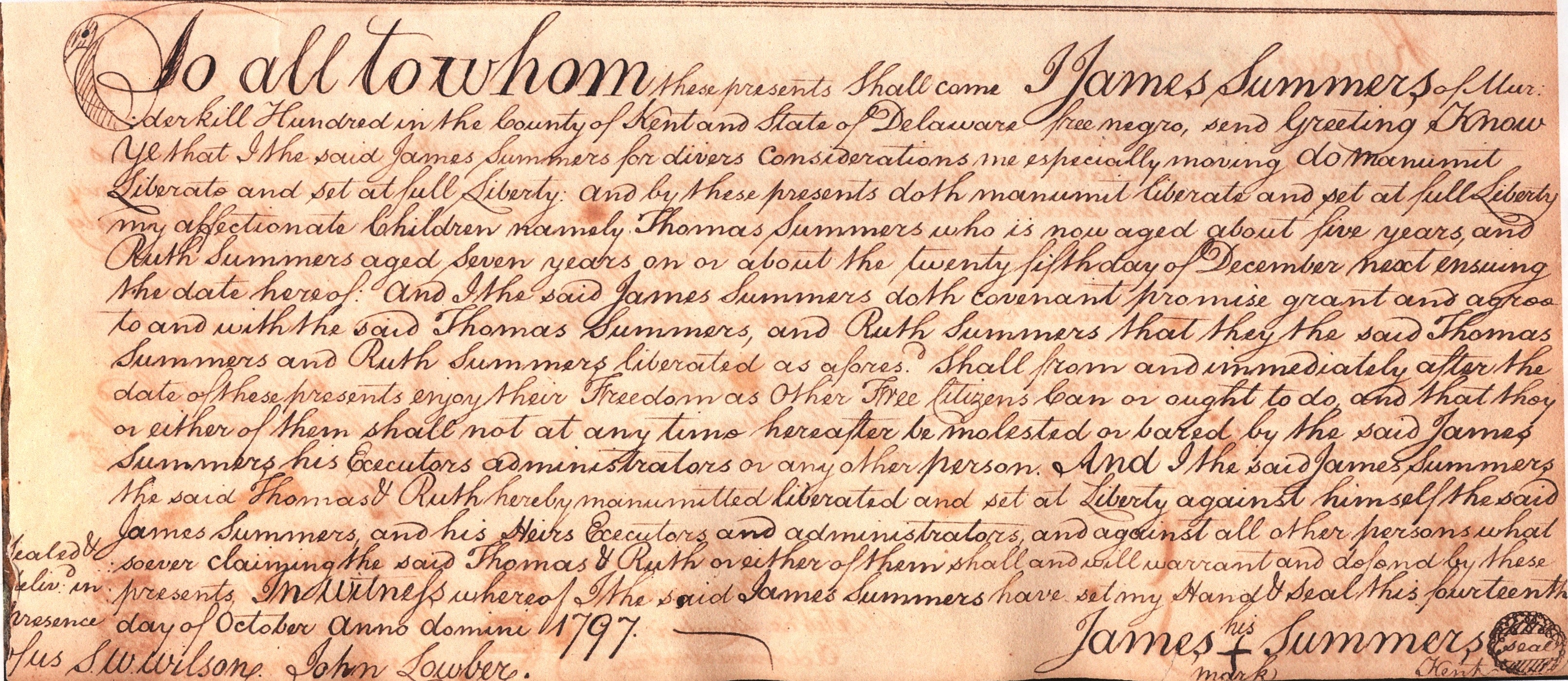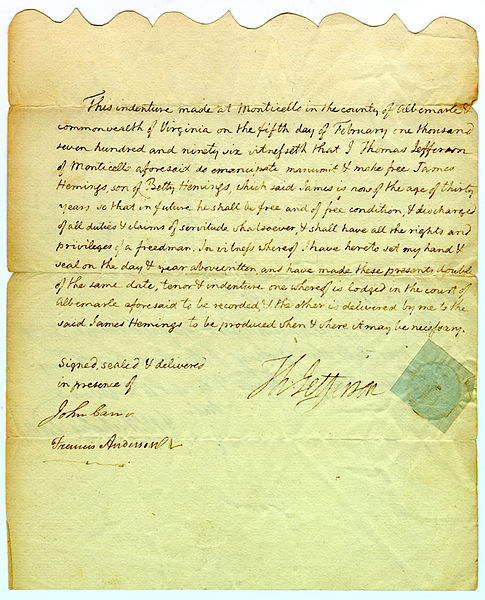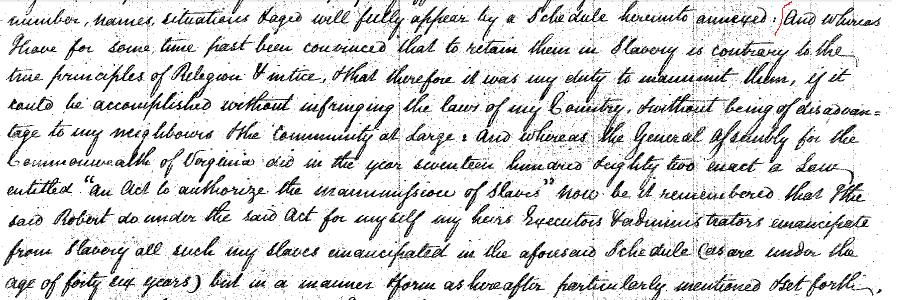Manumission
| The freedom cap | ||
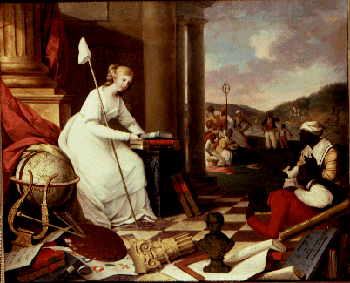 |
||
Depicting the capacity under law of an owner to free their slaves; inherited from Roman law. |
||
Map & Census | A New Relgious Sect | Three cases: Carter, Summers, Jefferson.
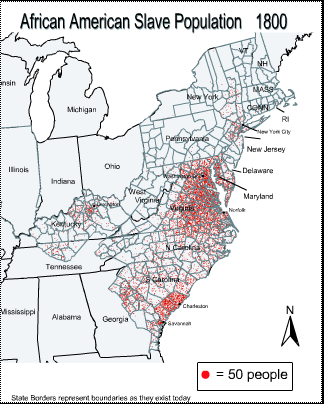 |
Total Number of Slaves Living in the United States |
|
1790 |
697,897 |
|
1800 |
893,041 |
|
1810 |
1,191,364 |
|
1820 |
1,538,038 |
|
1830 |
2,009,050 |
|
1840 |
2,487,455 |
|
1850 |
3,204,313 |
|
1860 |
3,953,760 |
|
Slavery was abolished by the Thirteenth Amendment, passed in 1865. |
||
Source – http://www.dcte.udel.edu/hlp2/resources/slavery/slaves-US-1790-1860.pdf
Bishop Richard Allen
Born into slavery in 1760, Richard Allen became a Methodist preacher, an outspoken advocate of racial equality and a founder of the African Methodist Church (AME), one of 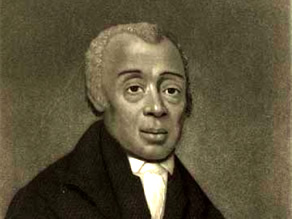 the largest independent African American denominations in the country.
the largest independent African American denominations in the country.
As a slave, Allen had neither freedom nor a last name. He was known simply as "Negro Richard." At age 17, Allen converted to Methodism after hearing a white itinerant Methodist preacher. Allen's owner, a Delaware planter, also converted and allowed Allen to buy his freedom in 1783. Allen bought his freedom for $2,000 and received a bill of manumission. He gave himself a last name, "Allen."
In 1786, Allen settled in Philadelphia, the capital of Pennsylvania established by William Penn as a "Holy Experiment." Here, Allen sold dry goods, worked as a shoemaker and managed a successful chimney-sweeping company. He attended St. George's, the city's leading Methodist church where blacks and whites were allowed to worship together. Allen became an assistant minister, preaching at an early-morning service which attracted a large following. The church constructed a balcony to accommodate its growing membership.
Discrimination as well as a concern for the welfare of freed blacks led Allen to consider the possibility of an all-black church to serve the city's 1,600 African Americans. As a preliminary step, he and several colleagues formed the Free African Society, an association that offered mutual aid and fellowship. With the help of Dr. Benjamin Rush, a physician and leading citizen of Philadelphia, they drafted a plan for church government.
In November 1787, Allen and other blacks were instructed to move into the balcony during a Sunday service at St. George's. They refused and walked out. Allen's friend and collaborator Absalom Jones left the Methodist Church entirely, establishing a black Episcopal meeting with oversight from the white bishop. But Allen and 10 other black Methodists stayed within the Methodist Church, founding the Bethel Church in an old blacksmith's shop.
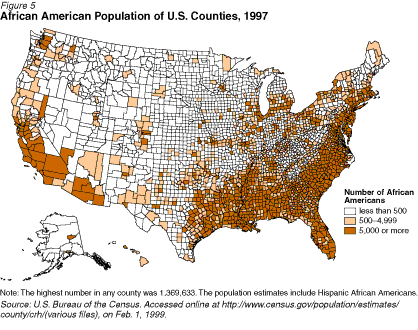
Examples of manumission letters.
Thomas Jefferson's freeing of James Hemmings, Betty Hemming's son.
The Letter of Manumission, dated 5 February 1796.
Eighteenth century Virginia was marked by extensive geographic movement from the Tidewater to the Piedmont beyond the fall lines of the Potomac, Rapidan, and James rivers and even over the Blue Ridge and Allegheny mountains. Yet land-use patterns, life-styles, labor systems and social structures were replicated, refined and even reinforced by the upland movement. The Jefferson family, led by Peter and Thomas (as seen in their 1751 map of Virginia), had key roles in the emergence of the Piedmont. Thomas's identification with Western exploration and settlement grew from his father's early movement from east of Richmond west to the Piedmont. Thomas's acceptance of the social obligation of public service and his lifelong adherence to the plantation-slave system of agriculture were also products of his family experience in Virginia's plantation system.
Jefferson's "Memorandum Book for 1773," "Promise of Freedom for James Hemings" and crop rotation plan are illustrative of plantation life. There is also notable testimony from former slaves at Monticello, including Madison Hemings, Israel Jefferson, Isaac Jefferson and James Hemings. Isaac Jefferson best described Thomas Jefferson in his library: "Old Master had abundance of books; sometimes he would have twenty of 'em down on the floor at once — read first one, then tother."
Robert Carter III
Robert Carter III was a signer of the Declaration of Independence. Carter's manumission rationale expressed in his Deed of Gift on August 1, 1791 and submitted it to the Governor and Council on September 5, 1791 eventually listing 452 slaves he intended to set free.
The oil painting at upper right.
Landscape with Rainbow, oil on canvas30 x 52 1/4 in. (76.3 x 132.7 cm.) 1859.
Robert S. Duncanson
Born: Seneca county, New York 1821 & Died: Detroit, Michigan 1872
Smithsonian American Art Museum: Gift of Leonard and Paula Granoff, 1983.95.160 Smithsonian American Art Museum: 2nd Floor, East Wing.
Robert Scott Duncanson was an African American artist who executed oil paintings and lived in Cincinnati, Ohio and was acclaimed by British art critics during his lifetime. The Smithsonian curators suggest that "In this painting, for example, Duncanson has organized a vast expanse along diagonals created by rock formations, lakes and streams, stands of trees, and mountain slopes. Washed by golden light, the broad pastoral scene exemplifies Duncanson's preference for nature's harmony and beauty rather than the terror and power of its forces."
See – http://americanart.si.edu/collections/search/artwork/?id=7601

